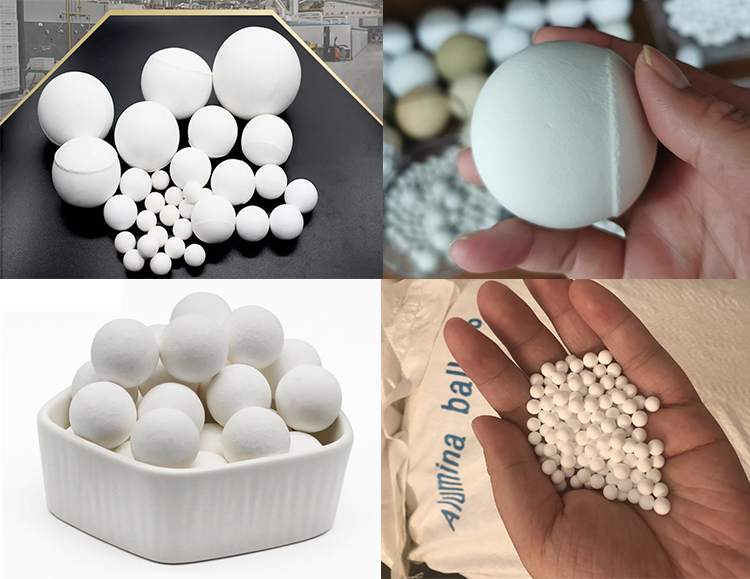Ball milling is divided into dry milling and wet milling. Wet milling is the most commonly used method with high efficiency and uniform particles. Because the particles are in the ball milling process, the large particles will be cracked under the grinding and impact of the ball milling medium, and the cracks will break into small particles after a long time, which is the so-called grinding process. If it is dry grinding, when the cracks of the particles expand during the ball milling process, due to the extrusion between the balls or the particles, the cracks formed may be "closed" by extrusion, the cracks cannot be effectively expanded, and the large particles cannot break quickly to form small particles. However, if it is wet grinding, then the liquid ball milling medium (water or absolute ethanol, etc.) will enter the formed crack gap and block the crack closure, which will effectively make the crack expand rapidly and greatly improve the ball milling efficiency. For dry grinding, it is generally aimed at materials that do not react in liquid media. If there is a reaction, other substances will be formed during ball milling, and ball milling is meaningless. For example, cement cannot be ball milled in water. At the same time, during dry grinding, due to the design of the ball milling tank, sometimes there will be dead corners, and some materials in the dead corners cannot be ball milled; however, wet milling also has a weakness for dry milling, that is, the powder after wet milling needs to be Drying removes moisture or other liquid media, thus increasing energy consumption and cost. The structure of dry ball mill and wet ball mill is composed of feeding part, discharging part, rotary part, transmission part (reducer, small transmission gear, motor, electric control) and other main parts. The difference between the dry ball mill and the wet ball mill structure: the discharge port of the dry ball mill is straight, and it is also equipped with an air induction device to discharge dust. The discharge port of the wet ball mill is trumpet-shaped, with a built-in screw device for convenient discharge. Most of the ball mills sold in the market are wet ball mills, which have high grinding fineness and good beneficiation effect.
Working Principle of Ball Mill
The dry ball mill is a cylindrical rotating device, driven by outer gears, two warehouses, and a lattice type ball mill. The material is spirally and evenly entered into the first chamber of the mill through the feeding hollow shaft by the feeding device. There are stepped lining boards or corrugated lining boards in the chamber, and steel balls of different specifications are installed inside. The rotation of the cylinder produces centrifugal force to bring the steel balls to a certain height. After falling down, it will hit and grind the material. Materials get coarse grind in the first warehouse, then into the second warehouse through the single-compartment. The second warehouse has flat liner and also filled with balls , then grind the material again. The powder is discharged through the unloading grate plate to complete the grinding operation.
The working principle of the wet ball mill is basically the same as that of the dry grinding method, that is, liquid medium needs to be added during the grinding process, and attention must be paid to properly controlling the grinding concentration. The amount of water added is generally determined according to the use of the mud, the amount of clay in the formula and the water absorption value of the clay. The material is gradually crushed under the action of impact and grinding. The crushed ore is discharged out of the cylinder through the discharge part. After the discharged minerals are classified into qualified products in the spiral classifier, the coarse sand passes through the joint feeder and returns to the ball mill for further grinding. The feeder feeds continuously and evenly, the ore enters the ball mill continuously and evenly through the combined feeder, and the ground materials are continuously discharged from the ball mill.
Grinding Ball Production Process:
A.Isostatic pressing:
The specification is generally 40-70mm. Isostatic pressing is to place the sample to be pressed in a high-pressure container, and use the incompressible properties of the liquid medium and the properties of uniform pressure transmission to uniformly pressurize the sample from all directions , when the liquid medium is injected into the pressure vessel through the pressure pump, according to the principle of fluid mechanics, its pressure is constant and uniformly transmitted to all directions. At this time, the pressure on the powder in the high-pressure container is uniform and consistent in all directions. The method of forming a dense body from barren powder through the above method is called isostatic pressing.
B.Roll forming:
The specification is generally 1-50mm. The roll forming process mainly relies on the plastic movement of materials to process various complex-shaped shafts, valve cores and special fasteners. Rolling deformation is a line contact, which is carried out continuously and step by step. The required deformation force is small, and one or several workpieces can be produced in one stroke. Compared with the cutting and grinding process, the rolling forming process not only has high production efficiency and saves materials, but also has high product strength and stable quality. This process is especially suitable for processing workpieces that are difficult to cut, especially for annual production. For products in large quantities of one million pieces, it is most beneficial to adopt the roll forming process, and the economic benefits are also the most considerable.
